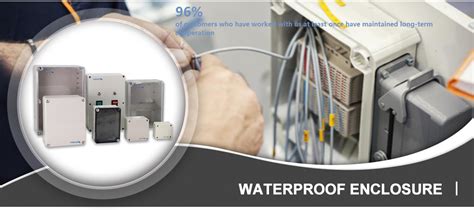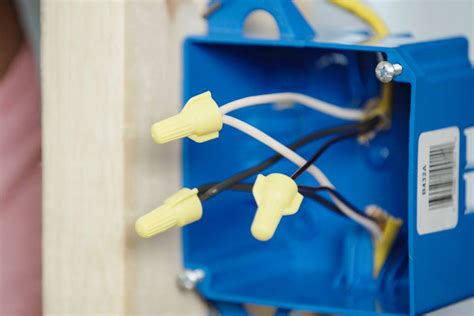do you need a junction box for wires in wall Yes, it is possible to put an electrical junction box in the wall. The process involves cutting an appropriate size hole in the wall to mount the junction box, running the necessary wiring to the .
The manufacturing process in wholesale sheet metal drawing auto part factories involves several steps. It begins with the initial design, where experts create detailed drawings and models .
0 · should junction boxes be covered
1 · no junction box wiring
2 · junction boxes for electrical connection
3 · electrical installation no junction box
4 · electrical boxes without junction box
5 · do junction boxes need wiring
6 · do junction boxes need protection
7 · are junction boxes needed
Dive into our online wholesale sheet metal parts products catalog on globalsources.com! Source over 1635 sheet metal parts for sale from manufacturers with factory direct prices, high quality & fast shipping.
should junction boxes be covered
Considering the NEC guidelines, it is generally not recommended to place a junction box inside a wall. This is primarily because accessibility can be compromised if the . You must start and end the conduit run in a junction box (or panel), but at that junction box you can transition to another wiring method. For instance, you might bring Romex to the junction box, then run THWN wires outdoors .

electric self cleaning cat litter boxes
Does a Junction Box Need to Be Covered? Yes. The box must fully enclose all the connection parts, including the wire nuts (plastic caps) and the electrical tape. You can't install a light fixture without a junction box unless the fixture has its own junction box. If you want to install a light in an indoor location where there's no box, the easiest solution is to install a remodel box. In . A junction box provides a code-approved place to house wire connections, whether for outlets, switches, or splices. Here's how to install one. Skip to content
Yes, it is possible to put an electrical junction box in the wall. The process involves cutting an appropriate size hole in the wall to mount the junction box, running the necessary wiring to the . Regardless of whether you are trying to add a new light fixture in your garage or are simply adding an outlet somewhere in your home, there is a chance that you are going to need to connect certain wires, extend a few .
Your local electrical code may allow you to place a junction box in the attic. Check with the permitting office before you do this. Metal boxes are stronger, so they will resist damage better than plastic boxes. But some devices do not require a separate junction box. Usually, they have their own integrated boxes or enclosures for making the wire connections. Learn which devices don't need junction boxes, and when to install junction boxes. Considering the NEC guidelines, it is generally not recommended to place a junction box inside a wall. This is primarily because accessibility can be compromised if the junction box is hidden within the wall cavity.
You must start and end the conduit run in a junction box (or panel), but at that junction box you can transition to another wiring method. For instance, you might bring Romex to the junction box, then run THWN wires outdoors through the "conduit as a wiring method" then transition back to Romex in the other building's junction box. Does a Junction Box Need to Be Covered? Yes. The box must fully enclose all the connection parts, including the wire nuts (plastic caps) and the electrical tape. Never install a junction box in a concealed wall or ceiling space where it cannot be accessed in the future. Junction boxes must also be covered with solid covers. You can't install a light fixture without a junction box unless the fixture has its own junction box. If you want to install a light in an indoor location where there's no box, the easiest solution is to install a remodel box. In outdoor locations, install a weatherproof surface-mount box.
A junction box provides a code-approved place to house wire connections, whether for outlets, switches, or splices. Here's how to install one. Skip to contentYes, it is possible to put an electrical junction box in the wall. The process involves cutting an appropriate size hole in the wall to mount the junction box, running the necessary wiring to the box, connecting the wiring to the box as needed, and then putting the device cover on the box. Regardless of whether you are trying to add a new light fixture in your garage or are simply adding an outlet somewhere in your home, there is a chance that you are going to need to connect certain wires, extend a few cords, or reconnect your circuit. Your local electrical code may allow you to place a junction box in the attic. Check with the permitting office before you do this. Metal boxes are stronger, so they will resist damage better than plastic boxes.
But some devices do not require a separate junction box. Usually, they have their own integrated boxes or enclosures for making the wire connections. Learn which devices don't need junction boxes, and when to install junction boxes. Considering the NEC guidelines, it is generally not recommended to place a junction box inside a wall. This is primarily because accessibility can be compromised if the junction box is hidden within the wall cavity. You must start and end the conduit run in a junction box (or panel), but at that junction box you can transition to another wiring method. For instance, you might bring Romex to the junction box, then run THWN wires outdoors through the "conduit as a wiring method" then transition back to Romex in the other building's junction box.
Does a Junction Box Need to Be Covered? Yes. The box must fully enclose all the connection parts, including the wire nuts (plastic caps) and the electrical tape. Never install a junction box in a concealed wall or ceiling space where it cannot be accessed in the future. Junction boxes must also be covered with solid covers. You can't install a light fixture without a junction box unless the fixture has its own junction box. If you want to install a light in an indoor location where there's no box, the easiest solution is to install a remodel box. In outdoor locations, install a weatherproof surface-mount box. A junction box provides a code-approved place to house wire connections, whether for outlets, switches, or splices. Here's how to install one. Skip to content
Yes, it is possible to put an electrical junction box in the wall. The process involves cutting an appropriate size hole in the wall to mount the junction box, running the necessary wiring to the box, connecting the wiring to the box as needed, and then putting the device cover on the box. Regardless of whether you are trying to add a new light fixture in your garage or are simply adding an outlet somewhere in your home, there is a chance that you are going to need to connect certain wires, extend a few cords, or reconnect your circuit.
no junction box wiring
junction boxes for electrical connection
electric pull box 1-1 4 pvc
electrical installation no junction box

Bathroom Faucets. Bathtub Faucet. Sinks. Kitchen Sinks. Bathroom Sinks. Sinks Accessories. Bathtubs. Bathtubs. Toilets. Handles. Bar Pulls. Cabinet Knobs. . High Pantry Cabinet-Oracle black (D21”*W23.6*H93”) Two Shelf and Three .
do you need a junction box for wires in wall|no junction box wiring